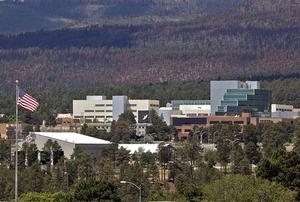Nuclear weaponsTop-secret super-secure vault declassified
Down a remote canyon near Los Alamos National Laboratory lies a facility known as the Tunnel Vault. Once one of the most secret and secure locations in the United States, it is the original post-Second World War nuclear stockpile storage area. Built between 1948 and 1949, the facility has a formidable security perimeter, a hardened guard tower — complete with gun ports and bulletproof glass — and a series of gates and doors that lead to a 230-foot long concrete tunnel that goes straight into the canyon wall.

Los Alamos National Laboratou Vault, where in lies storage // Source: lanl.gov
Down a remote canyon near Los Alamos National Laboratory anallies a facility known as the Tunnel Vault. Once one of the most secret and secure locations in the United States, it is the original post-Second World War nuclear stockpile storage area.
Located in Los Alamos canyon at Technical Area 41, the Tunnel Vault was built between 1948 and 1949. A Los Alamos Lab release reports that the facility has a formidable security perimeter, a hardened guard tower — complete with gun ports and bulletproof glass — and a series of gates and doors that lead to a 230-foot long concrete tunnel that goes straight into the canyon wall.
At the end of the tunnel is a large alcove room with a single bank vault door. Through that door is a vault built inside a vault with five storage areas, all protected with identical bank vault doors. All these features can be seen on a video that tours the recently declassified, historically significant facility available on the Los Alamos National Laboratory YouTube channel.
The video also features commentary by Ellen McGehee, the Laboratory’s historic facilities manager, Alan Carr, Lab historian, and Glen McDuff, a weapons scientist who worked at various times in the facility and later operated a classified museum there.
As part of the Laboratory’s seventieth anniversary Signature Week, the Tunnel Vault was one of the stops on two tours during the week of 22 July, one tour was open to working news media, and the other tour was part of the Laboratory’s family celebration for employees and their family members.
Over the years the Tunnel Vault was also used as a storage area for nuclear materials and nuclear fuel, a weapons research and development laboratory, weapons components storage, and nuclear material assembly for tests both in the Pacific and in Nevada.
“This facility had a long history during the cold war. So this was definitely a top secret, very secure location,” said McGehee.
About halfway down the tunnel is a side room that was used for early development of unclassified research that led to the discovery of the neutrino — work that later won a Nobel Prize in physics — a lab space ideal for the work because it is buried 300-feet deep underground.
